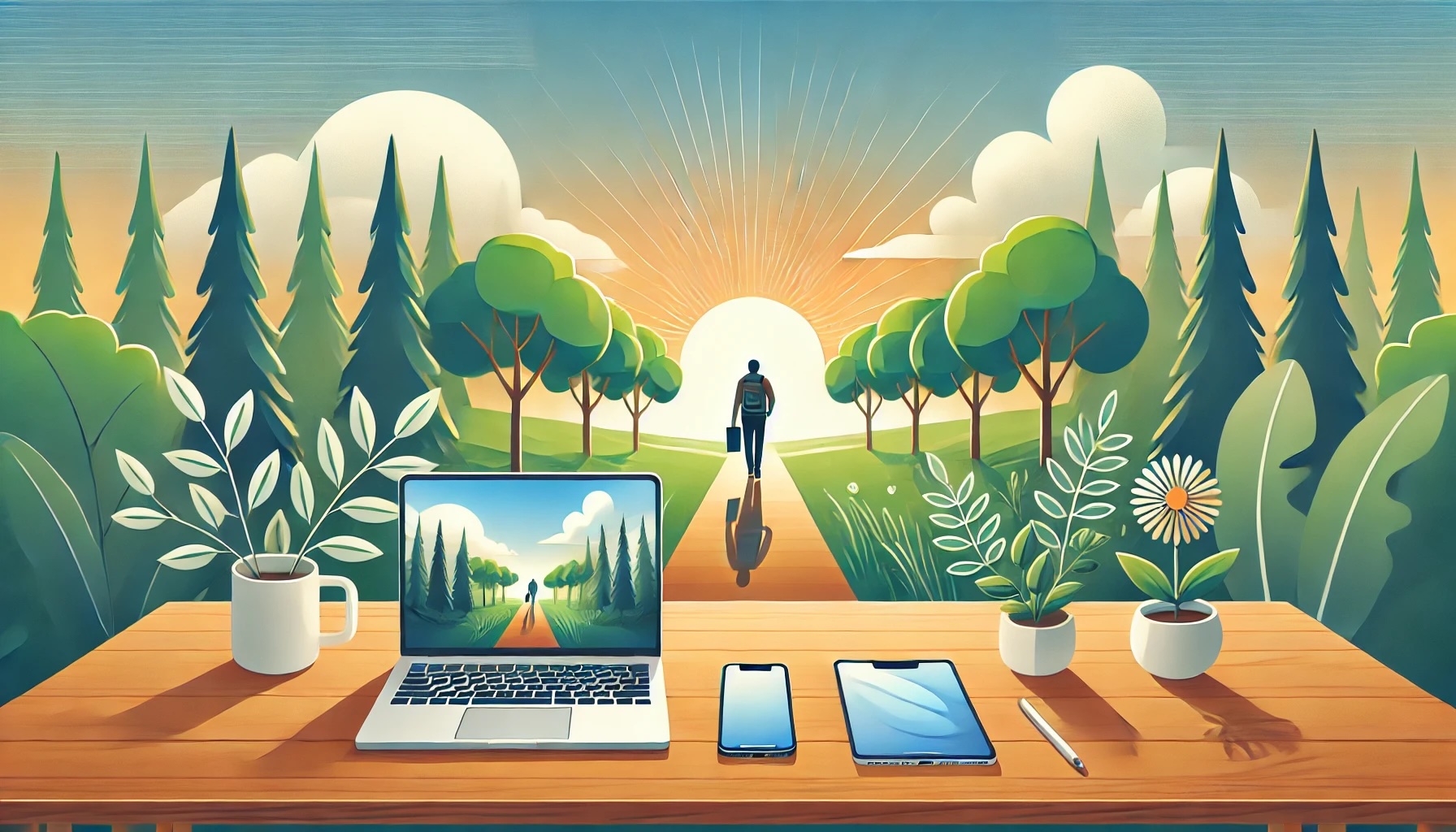In today’s digital age, smartphones, computers, and other electronic devices have become integral to daily life. However, excessive screen time not only harms our eyesight but can also lead to mental health issues such as anxiety, depression, and stress. Learning to manage screen time is crucial. This article explores the importance of “digital detox” and provides effective strategies to improve mental health and overall well-being.
1. Why Digital Detox Matters: The Impact of Screen Time on Mental Health
The Effects of Excessive Screen Time
• Emotional Disorders: Studies show that excessive use of social media can lead to anxiety and depression.
• Poor Sleep Quality: Screen blue light disrupts melatonin production, making it harder to fall asleep.
• Decreased Attention Span: Frequent multitasking (e.g., working while checking your phone) reduces focus.
• Social Isolation: Over-reliance on virtual interactions can weaken real-life relationships.
Scientific Evidence
A 2020 study published in Psychological Science found that people who spend more than six hours a day on screens are at a significantly higher risk of developing anxiety and depression.
2. Identifying Your Screen Usage Patterns
How to Evaluate Your Screen Time
• Use Screen Time Tracking Tools: Features like “Screen Time” on smartphones or third-party apps.
• Categorize Usage: Track time spent on work, entertainment, and social media.
• Identify Peak Usage Periods: Understand when and why your screen usage spikes.
Common Screen Usage Traps
• Mindless Scrolling: Opening your phone without a clear purpose.
• Social Media Addiction: Constantly checking notifications, likes, and comments.
• Multiscreen Behavior: Watching videos while replying to messages, leading to distraction.
3. Benefits of a Digital Detox
Improved Mental Health
• Reduced Anxiety and Stress: Less information overload allows your brain to rest.
• Increased Happiness: Engaging more with the real world fosters genuine emotional connections.
• Restored Focus: Concentrating on single tasks improves efficiency and creativity.
Enhanced Physical Health
• Reduced eye strain from blue light exposure.
• Better sleep, leading to higher energy levels.
• Reduced sedentary behavior, lowering risks of obesity and cardiovascular diseases.
4. Practical Strategies for a Digital Detox
1. Set Screen Time Rules
• Limit Daily Screen Time: For example, restrict usage to no more than two hours a day.
• Establish Screen-Free Periods: Such as during meals or one hour before bedtime.
• Use App Reminders: Set time limits to prevent overuse.
2. Adopt Regular “Offline” Habits
• Dedicate one day a week to being completely device-free.
• Replace e-books with physical books for a more focused reading experience.
• Try short trips or vacations without bringing your phone.
3. Create Screen-Free Zones
• Prohibit devices in bedrooms or dining areas.
• Avoid multitasking with multiple screens during work hours.
4. Find Screen-Free Alternatives
• Increase Outdoor Activities: Walking, running, or gardening.
• Develop Hobbies: Such as painting, playing music, or crafting.
• Strengthen Social Bonds: Spend face-to-face time with family and friends.
5. Reduce Social Media Dependence
• Regularly clean up your social media following list, keeping only valuable connections.
• Turn off unnecessary notifications to minimize distractions.
• Practice “content decluttering” by limiting exposure to meaningless information.
5. Scientific Support for Digital Detox and Mental Health
Case Study: Screen Use Before Bed and Sleep Quality
• A study published in Sleep Medicine found that individuals who use their phones within an hour before bedtime experience significantly lower sleep quality compared to those who stay offline.
• Suggestion: Turn off your phone before bed and engage in relaxing activities like meditation or reading.
Experimental Data: Social Media and Emotional Fluctuations
• Research indicates that teenagers who use social media for more than three hours a day show 20% higher symptoms of anxiety compared to non-users.
• Suggestion: Limit social media usage and focus on positive, meaningful content.
6. Challenges and Solutions for Sustaining a Digital Detox
Challenge 1: Work Requirements
Solution:
• Define clear boundaries between work and rest times.
• Use time management techniques (e.g., Pomodoro method) to boost productivity.
Challenge 2: Habitual Dependency
Solution:
• Gradually reduce screen time rather than stopping abruptly.
• Set small goals, like cutting back by 15 minutes per week.
Challenge 3: Social Pressure
Solution:
• Inform friends and colleagues about your digital detox plan.
• Use “Do Not Disturb” mode when needed to avoid interruptions.
7. How to Maintain Long-Term Digital Detox Success
Build Daily Digital Detox Habits
• Dedicate 10–15 minutes each day for “digital downtime.”
• Consistently monitor screen usage and adjust as needed.
Foster Healthy Screen Use
• Opt for eye-friendly screen settings, such as reduced brightness or blue light filters.
• Use headphones or voice assistants to reduce screen interaction.
Reward System
• Treat yourself to a non-screen-related activity, such as a yoga class or a movie night, after meeting your screen time goals.
Conclusion: Digital Detox as a Step Toward a Happier Life
Digital detox is not just about cutting down screen time but reclaiming control over your time and life. In an era of information overload, learning to manage screen usage can significantly improve mental health and overall happiness. By implementing the strategies discussed above, you can gradually find a healthy balance and embark on a path toward a more fulfilling and mindful lifestyle.




















